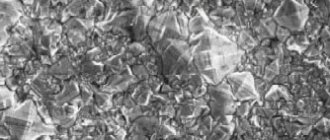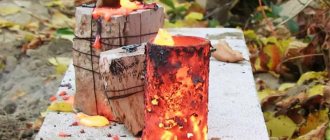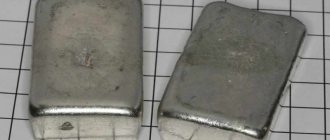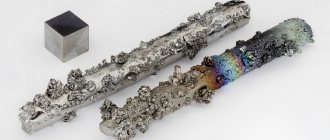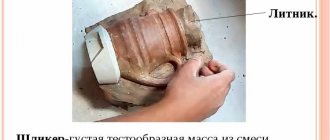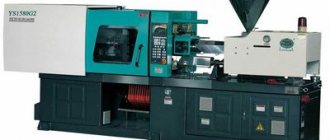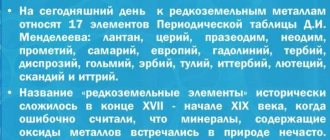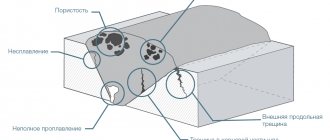Features of the jeweler's profession
The profession of a jeweler requires not only a creative approach. A jeweler must be careful and patient. There are many nuances in this matter, the observance of which requires utmost precision. A jeweler works with high temperatures and hot metal; the danger of this profession requires endurance and physical strength. A master jewelry maker is not only a designer who comes up with sketches and works with a file under the bright light of a lamp. This is also a foundry worker, managing hot furnaces and molten metal, lifting heavy plaster molds and ensuring that technology is followed. The arsenal of a jewelry master is full of unusual devices that the average person has never even heard of. For example, flask. What is a flask and what is this device used for? Our article will talk about this.
Opoka in jewelry making
Despite all the innovations and high level of technology for making jewelry, many of the jeweler’s working methods remain unchanged since ancient times. The ring casting process, for example, has changed little.
To answer the question of what a flask is, you should find out how the jewelry casting process occurs. To make a ring from a precious metal, a jeweler uses a special fireproof cylinder into which hot metal, molding compound and wax blanks are placed. This is the flask.
This device serves to hold the molding sand while it is compacted during the process of obtaining a casting mold into which the precious metal is poured. You can make a flask yourself, the main thing is that it is made of fire-resistant material. Some craftsmen make a flask from a piece of pipe or roll it from a sheet of iron. The photo shows a modern metal flask.
This flask is already filled with molding mass, inside of which there are wax blanks. The next step is calcination of the flask in a hot furnace; this procedure takes place in the foundry.
One day in the foundry
Finally, we reached the heart of jewelry production - the foundry, or, as jewelers more often call it, foundries. Here, wax is melted under hot metal, and fragile wax models are turned into gold or silver products.
We looked into the SOKOLOV foundry to see everything with our own eyes.
Meet the foundry worker
Interestingly, the foundry profession is one of the most traditional in Russia. The initially used bronze and copper were later replaced by gold and silver, the equipment was gradually improved, but the subtleties of the jewelry casting process were passed on from generation to generation.
This is probably why foundry workers are somewhat reminiscent of blacksmiths: as a rule, they are strong, strong men who are comfortable with hot metal, hot furnaces and can easily handle various tools, whose impressive size cannot be called jewelry.
Making a casting mold
As we already know, future products arrive at the casting site in the form of a wax block, or Christmas tree. Therefore, to cast jewelry in metal, you must first make a special mold. This process is called molding.
To do this, the wax tree is placed in a metal cylinder - a flask, which is placed on a round rubber stand, or, as foundry workers funny call it, a galosh. Casting molds are made from a special molding mass - a dry mixture of various refractory substances (gypsum, silicon, quartz and others), retarders, binders and water.
All this is poured into a mixer similar to a large mixer and, as in the best culinary recipes, “beat until smooth.” Then the solution is carefully poured into the flask, which is placed on a vibrating table. This is necessary so that the mass shrinks and there are no voids or air in the mold.
To calcinate and melt wax models, the flasks are placed in special ovens, the temperature of which can reach 1000 degrees Celsius. The casting mold is heated in 2-3 steps with periodic shutter speeds. As a result, the wax is melted down and makes room for gold or silver.
Interestingly, the finished investment ring is cooled to the pouring temperature at a rate of 100 degrees per hour.
Pouring metal
When the flask is calcined, it is time to pour the metal.
Gold or silver is loaded into one of the molds of a special installation for centrifugal casting, and a cooled flask is placed in another mold. At the same time, air is pumped out of the entire system, a vacuum is formed, and helium is pumped in. After this, the required temperature is set, and metal is poured into the flask.
The finished form is taken out using large tongs on a long handle with the self-explanatory name “grip” and cooled under the influence of powerful fans, and then water. The molding mass is washed out, and the foundry worker takes out a gold or silver tree from the flask.
Casting with stones
When making some products with cubic zirconia, the stones are fixed in the waxing area, so models with ready-made inserts are cast in metal.
The process of so-called stone casting is practically no different from ordinary casting. However, in order not to damage the inserts, the flask is calcined at lower temperatures, and a special molding compound is often used for molding.
When the wax is melted, the stones are firmly held in the plaster, and the voids are filled with precious metal.
This technology has been used in jewelry production for more than 20 years. It is very popular abroad and is increasingly used in Russia.
Finishing operations
To completely clean the molding material, the precious Christmas tree is washed under high pressure of water. Then it is dried and the finished products are cut with manual or automatic scissors.
The jewelry is weighed and sent for further processing.
Disposable flasks
Having learned what a flask is and how it is used, it is easier to understand the intricacies of the process. It no longer seems so complicated, but rather interesting and simple. Modern technologies allow you to try to make your own jewelry almost at home. The Chinese market offers a wide range of disposable molds with ready-made molds. All that is needed to work with such a form is the required amount of precious metal and the ability to melt it. They are used both by jewelers who do not have their own foundry, and by freelance craftsmen who make custom-made jewelry.
Author: Anastasia Razulite
Foundry flasks (GOST 2133-75).
Section: LIBRARY OF TECHNICAL LITERATURE Short path https://bibt.ru<<Previous page Book table of contents Next page>>
They are classified (GOST 2133-75) into types, types, categories and groups.
Depending on the manufacturing method, flasks are divided into types:
I - solid cast steel, cast iron and light alloys;
II—welded from standard and special rolled steel or cast steel elements;
III—rolled ones made of steel and cast iron.
According to the configuration (contour in the light), there are three types of flasks: rectangular (or square), round and shaped.
Rice. 23. Manual (a) and crane (b) flasks
Manual flasks (Fig. 23, a), having a mass without molding sand of up to 30 kg, are classified as category 1; combined - weighing up to 60 kg with devices for manual and crane lifting - category 2; crane flasks weighing over 60 kg (Fig. 23, b) - to the 3rd category.
The flasks intended for vertical pouring have slots in the side or end walls for making channels of the gating system and special devices (brackets, pins) for rotating the flasks for pouring. Such flasks are also used for horizontal filling of molds.
To hold the mixture in large and medium flasks, ribs (crosses) are made, as well as flanges and ribs on the side and end walls. The crosspieces are made from the side where the investment box is filled with molding sand.
To remove gases from the mold when pouring them with melt, as well as to reduce mass, round or oval holes are made on the side and end walls of the flasks, arranged in a checkerboard pattern.
To center the flasks, there are ears with centering bushings or pins; for lifting and moving - staples, pins, handles.
The dimensions and design of the flasks are normalized (Table 90).
90. Dimensions of normalized flasks, mm
Approximate data on the mass of normalized flasks with and without molding sand are given in Table. 91.
91. Approximate data on the weight of casting flasks
Clear size of the flask, mm
| Height of the flask, mm | Weight of the flask, kg | Weight of half-mold with molding sand, kg | ||
| top or bottom | top or bottom | top | bottom | |
| 450X350 | 150 150 | 22 22 | 45 | 45 |
| 800X650 | 300 300 | 200 200 | 460 | 460 |
| 1200X900 | 250 600 | 250 350 | 690 | 1390 |
| 1400Х1000 | 250 450 | 380 500 | 940 | 1540 |
| 1500X1000 | 300 400 | 550 620 | 1270 | 1410 |
| 1500Х1000 | 300 500 | 550 675 | 1270 | 1650 |
| 1550X1200 | 450 600 | 625 850 | 1950 | 2625 |
| 1600X1600 | 350 500 | 1275 1575 | 2400 | 3200 |
| 1800Х1000 | 300 450 | 600 725 | 1640 | 2150 |
| 2200X2200 | 400 500 | 2850 3400 | 5850 | 7300 |
| 2800X1200 | 350 500 | 1200 1350 | 2200 | 2500 |
| Diameter 3000 | 350 500 | 3000 4800 | 6500 | 9300 |
| 3000X1500 | 350 700 | 1650 2750 | 4500 | 8500 |
| 3000X2500 | 450 600 | 5000 6200 | 10500 | 13500 |
| 3500X1200 | 450 600 | 3600 4550 | 6500 | 8450 |
| 3500X1500 | 400 700 | 4450 5700 | 8300 | 12400 |
| 4500X2000 | 450 600 | 6400 7700 | 12900 | 16400 |
| 6000X1600 | 450 700 | 6500 8000 | 12700 | 17500 |
The pairing and centering of the flasks is carried out using pins (see sketch to Table 96, molding according to a one-piece model), which can be removable and fixed to the flask. The pins must ensure a smooth connection of the flasks and prevent distortion. For easy and correct pairing, one sleeve of the flask is made round, the second - oval. Bushings and pins must be hardened and free from defects.
The flasks are periodically inspected and if there are any defects, they are repaired or rejected.
Skip to navigation

